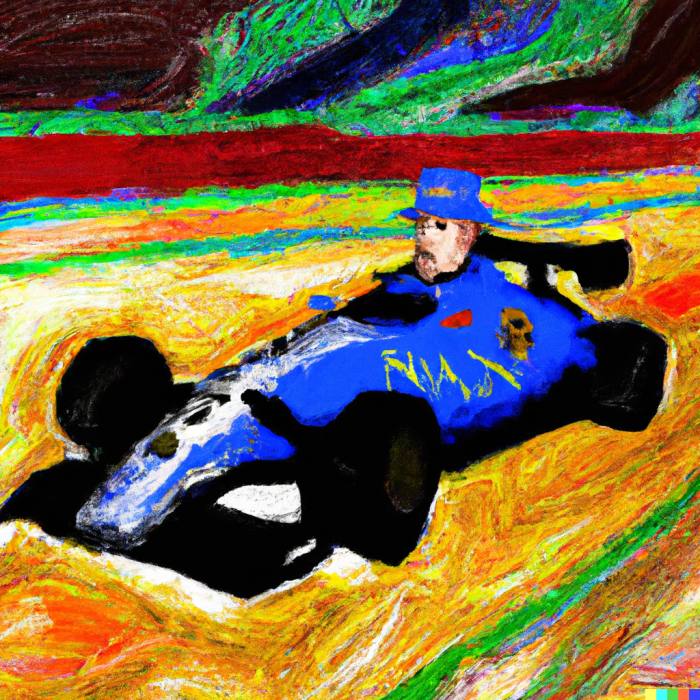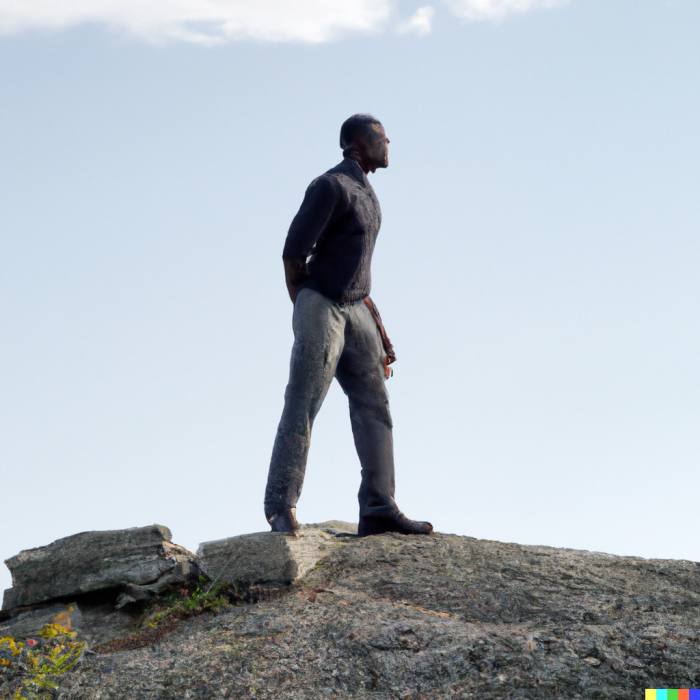The imitation game: can software make artists redundant?

One online commentator asked for teddy bears shopping for groceries in the style of ukiyo-e, and seemed impressed. Another wasn’t so happy; they’d ordered up an image of cats drinking soup in the style of Gustav Klimt (“The Kiss” is apparently a favourite picture). An earlier request, for a Formula One race on Mars in the style of Van Gogh, had produced something that looked like a rejected image for a home-produced cover of an album by a minor stoned-out 1970s band — but had apparently met with a reasonable amount of approval. Klimt’s soup-slurping cats, however, were not hitting the spot. “It didn’t look anything like ‘The Kiss’,” wailed the instigator.
Now why, I wonder, could that be? The Generative Artificial Intelligence (GAI) facility Dall-E-2, which generates images according to a written description of a few words, should surely have been able to deliver the goods. Cats, soup, Klimt — where’s the problem?
Ever since I heard about Dall-E in its first incarnation a while ago, I knew that I couldn’t avoid it altogether for long. It has, after all, pretty much stolen my name. All that’s missing is a “Y”.
Now Dall-E-2 is with us and, according to devotees, much improved. More detailed, more nuanced, more responsive. I’ll take their word for it. What is certain is that it has sent ripples, if not shockwaves, through a community of creative people: does it challenge their reason for being and our notions of what art should be?
There’s no doubt that it’s fun to play with. The wilder shores of Formula One, soup, Mars, Van Gogh and teddies are easy to explore — and even if the results are usually an assault on the eyeballs, it’s quite entertaining to spot the elements drawn from original works that artificial intelligence has absorbed and latched on to. Say Van Gogh, and you get a piercingly deep blue night sky studded with cartoony stars, as per the artist’s “Café Terrace at Night”; ask for Klimt and you do get a simulation of his colour palette: rusts and blacks, that searing yellow.
All that this shows us is what we know about AI, as opposed to NI (intelligence of the natural sort) — it can tell us only what someone else has already told it. Even if the forms into which it can shape and reshape that knowledge are almost infinite, and sometimes frighteningly (if perhaps accidentally) acute.


What interested me more, in my dalliance with the site, was to see what it did with very close-to-artist briefings. Waterlilies in the style of Monet. Spots in the style of Damien Hirst. Wheat fields in the style of Van Gogh. How close to the real thing can it go? With most of these, not very close — the waterlilies were just very blurry (although Monet’s murky purple underpainted depths were surprisingly well rendered); the wheat fields were clunky and childish; the spots were, well, wrapping paper. A request for a man on a hill in the style of Antony Gormley elicited a sort of big clumsy Tintin with a moorland sky behind. Anything at all to do with Picasso was laughably terrible.
But come to a David Hockney swimming pool and the results (Dall-E-2 gives you four different offerings each time, and four more if you ask again; you can also edit them at will) were surprisingly sophisticated: although never veering too close to that bigger splash, there were renderings of different phases and techniques in the artist’s work. And the images weren’t so bad — at about the level of a competent illustrator. I hesitate to say this could have something to do with the nature of the original.
The point of this exploration? To work out whether in fact artists have any reason to feel threatened by GAI machinations such as these. On the basis of my cursory research, clearly they don’t — though some might feel offended or even enraged by the way their work is regurgitated in a form that pretty much amounts to parody. Even if the whole lot could be filed under Massively Missing The Point.


More seriously, what does all this mean for those old-school notions of copyright and intellectual property? Does Hockney hold any rights over turquoise pools with a stripy undertow? Does Hirst own spot patterns? Obviously not — but still we know a rip-off when we see it. And there are aggrieved yelps across the digital world from creators who know that massively profitable sites are built by scraping the internet for their original work.
These issues have been gnawed over since this kind of software first emerged. With Dall-E-2, the law is already clear: “in the eyes of the Copyright Office, the public is free to reproduce, publish, or sell” any old piece of rubbish you create — whoops, sorry, “your Dall-E-2-generated masterpiece” — with no strings attached. Its creators freely admit that the GAI has been “trained”, as I’ve learnt to call it, with copyright images and original work that might come under all sorts of restrictions, but there’s no actual crime here, it seems.
Possibly not. The debates continue. What surprises me most about the back-and-forth around the subject is a pervasive view that GAIs are capable of creating beautiful and skilful images that might actually fool someone, or replace an artist’s real work. If that’s true, I must have been looking in the wrong place.
Jan Dalley is the FT’s Arts editor. Jo Ellison is away
Find out about our latest stories first — follow @ftweekend on Twitter
[ad_2]
Share this news on your Fb,Twitter and Whatsapp
Times News Express:Latest News Headlines
Times News Express||Health||New York||USA News||Technology||World News